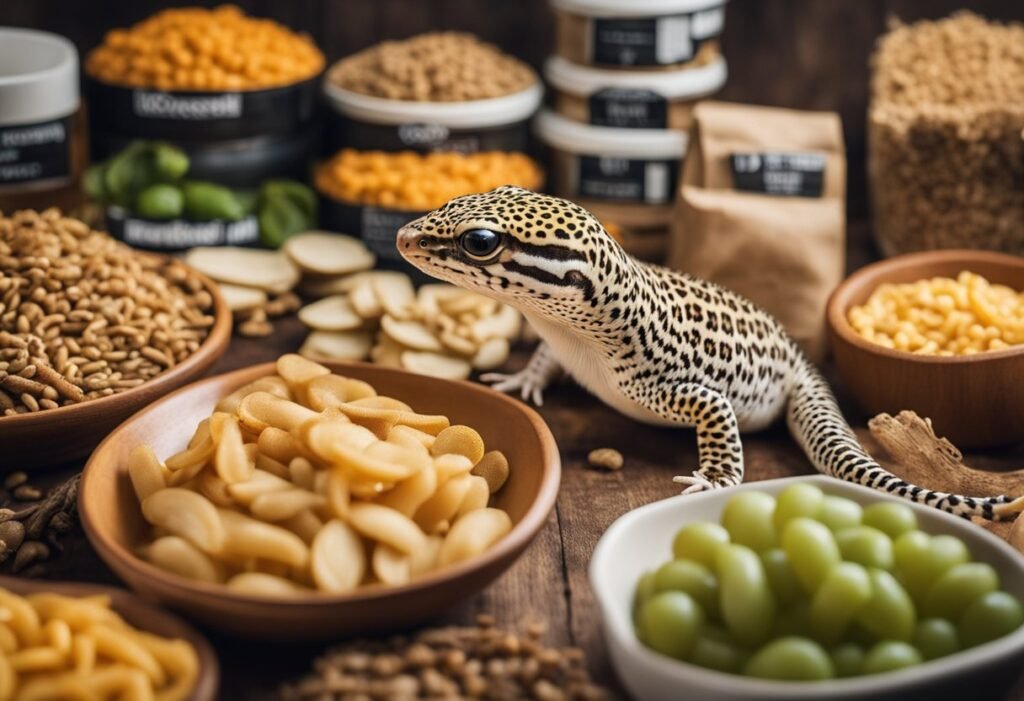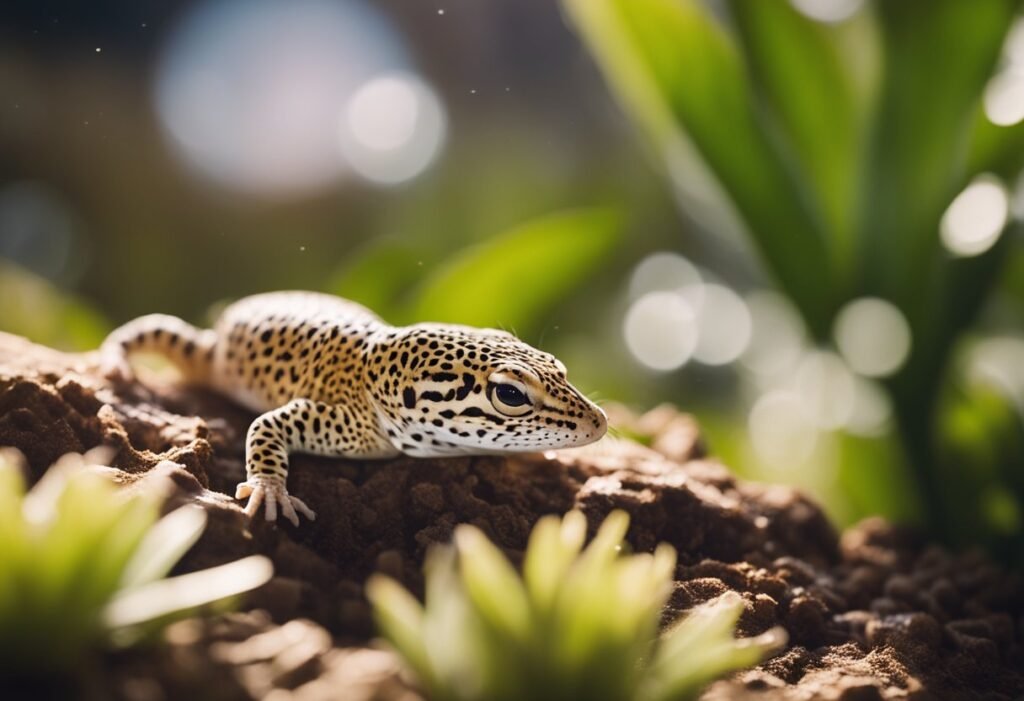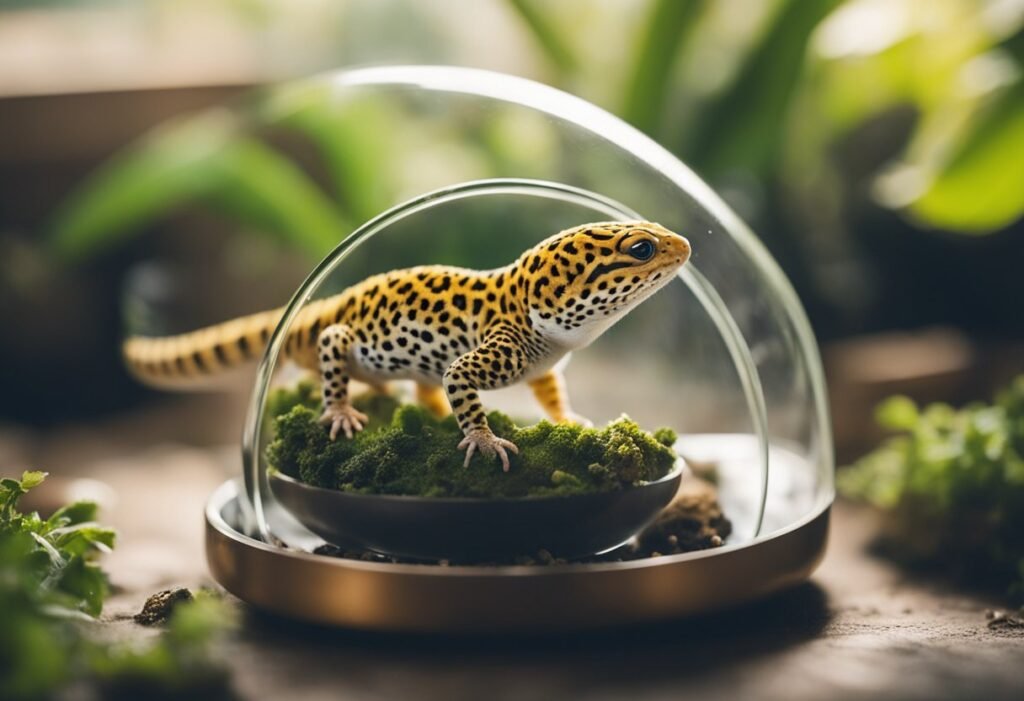Leopard geckos are one of the most popular reptile pets due to their docile nature and ease of care. As a responsible pet owner, it is important to provide your gecko with a balanced and nutritious diet. While there are many food options available, wax worms are a common treat that many gecko owners consider feeding their pets.
But can leopard geckos eat wax worms? The short answer is yes, they can. Wax worms are a high-fat, high-protein food source that can be a good occasional treat for your gecko. However, it is important to understand the potential risks and drawbacks of feeding your gecko wax worms, as well as how to properly incorporate them into their diet.
In this article, we will explore the pros and cons of feeding wax worms to leopard geckos, as well as provide tips on how to safely incorporate them into their diet. We will also discuss alternative food options and offer advice on how to ensure your gecko is receiving a balanced and nutritious diet.
Dietary Overview of Leopard Geckos

Leopard geckos are insectivores, which means they only eat insects. In the wild, they feed on a variety of insects, including crickets, mealworms, and wax worms. As pets, they can be fed a similar diet, but it is important to provide them with a balanced and varied diet to ensure they receive all the necessary nutrients.
Nutritional Needs
Leopard geckos require a diet that is high in protein and low in fat. They also need a source of calcium and vitamin D3 to maintain healthy bones. Insects such as crickets and mealworms are a good source of protein, but they are also low in calcium. To ensure your leopard gecko receives enough calcium, you can dust their food with a calcium supplement.
Wax worms are high in fat and should only be fed as an occasional treat. They are not a suitable staple food for leopard geckos as they do not provide the necessary nutrients. Overfeeding wax worms can lead to obesity and other health problems.
Feeding Frequency
Leopard geckos should be fed once a day, or every other day for adult geckos. Juvenile geckos may require more frequent feedings to support their growth. It is important not to overfeed your leopard gecko as obesity can lead to health problems.
In conclusion, a balanced and varied diet is essential for the health and wellbeing of leopard geckos. Feeding them a diet that is high in protein and low in fat, while also providing them with a source of calcium and vitamin D3, will help keep them healthy and happy.
Wax Worms as Food

Wax worms are a popular treat for leopard geckos, and they can be a great addition to their diet when fed in moderation. However, it is important to understand the benefits and risks of feeding wax worms to your leopard gecko.
Benefits of Wax Worms
Wax worms are a good source of fat and protein, which are important nutrients for leopard geckos. They are also high in calcium, which is essential for healthy bones and teeth. Feeding wax worms as an occasional treat can help to supplement your leopard gecko’s diet and provide them with these important nutrients.
Risks of Overfeeding
While wax worms can be a nutritious treat for leopard geckos, it is important not to overfeed them. Wax worms are high in fat and should be fed in moderation to prevent obesity and other health problems. Overfeeding wax worms can also lead to a calcium deficiency, as they contain a high amount of phosphorus which can bind to calcium and prevent its absorption.
In conclusion, wax worms can be a great addition to your leopard gecko’s diet when fed in moderation. By understanding the benefits and risks of feeding wax worms, you can provide your leopard gecko with a healthy and balanced diet.
Feeding Technique
How to Offer Wax Worms
When feeding leopard geckos wax worms, it is important to offer them in a way that is safe and easy for the gecko to consume. Wax worms can be placed in a small dish or directly on the substrate. It is important to ensure that the dish is shallow enough for the gecko to easily access the worms. We recommend using a small, shallow dish that is easy to clean and disinfect.
To make it easier for the gecko to locate the wax worms, we suggest placing the dish in a consistent location within the enclosure. This will help the gecko to recognize where the food is located and make it easier for them to find it.
Monitoring Consumption
It is important to monitor the consumption of wax worms when feeding leopard geckos. While wax worms can be a healthy addition to their diet, they should be offered in moderation. Overfeeding wax worms can lead to obesity and other health issues.
To monitor consumption, we suggest keeping track of how many wax worms are offered and how many are consumed. This can be done by keeping a log or simply observing the gecko during feeding time. If the gecko is consistently leaving uneaten wax worms in the dish, it may be a sign that they are being overfed.
In addition to monitoring consumption, it is important to ensure that the wax worms are fresh and healthy. We recommend purchasing wax worms from a reputable supplier and checking them for signs of mold or other issues before offering them to your gecko.
Overall, offering wax worms to leopard geckos can be a healthy addition to their diet when done in moderation and with proper feeding techniques.
Alternatives to Wax Worms

If you’re looking for a variety of food options for your leopard gecko, there are several alternatives to wax worms that you can consider. Here are a few options to consider:
Other Insect Options
- Crickets: Crickets are a popular and easily accessible food option for leopard geckos. They are high in protein and contain essential nutrients that your gecko needs to stay healthy. You can buy crickets from most pet stores or online retailers. It’s important to gut-load your crickets before feeding them to your gecko, which means feeding them a nutritious diet so that your gecko gets the most out of their meal.
- Mealworms: Mealworms are another popular food option for leopard geckos. They are high in protein and easy to find at most pet stores. It’s important to note that mealworms have a hard exoskeleton that can be difficult for your gecko to digest. To make them easier to digest, you can gut-load them and also offer them in moderation.
- Dubia Roaches: Dubia roaches are a great alternative to crickets and mealworms. They are high in protein, easy to digest, and have a soft exoskeleton. They are also low in fat, making them a great option for geckos that are prone to obesity. You can buy dubia roaches online or from specialty pet stores.
Supplemental Foods
In addition to insects, there are also several supplemental foods that you can offer your leopard gecko to ensure they are getting a well-rounded diet. Here are a few options to consider:
- Calcium Powder: Calcium powder is an essential supplement for leopard geckos. It helps to maintain strong bones and prevent metabolic bone disease. You can sprinkle calcium powder on your gecko’s food a few times a week to ensure they are getting enough calcium.
- Vitamin Powder: Vitamin powder is another important supplement for leopard geckos. It helps to ensure they are getting all the essential vitamins and minerals they need to stay healthy. You can sprinkle vitamin powder on your gecko’s food a few times a week to ensure they are getting enough nutrients.
- Fresh Vegetables: While leopard geckos are primarily insectivores, they can also benefit from fresh vegetables. Some good options to consider include kale, collard greens, and carrots. You can chop up the vegetables into small pieces and offer them to your gecko a few times a week as a supplement to their regular diet.
Overall, there are several alternatives to wax worms that you can consider when feeding your leopard gecko. By offering a variety of food options and supplements, you can ensure your gecko is getting all the essential nutrients they need to stay healthy.
Health Considerations
Obesity and Nutritional Imbalance
When feeding leopard geckos wax worms, it is important to keep in mind the potential for obesity and nutritional imbalance. Wax worms are high in fat and should be fed sparingly as a treat rather than a staple food item. Overfeeding wax worms can lead to weight gain and health problems such as fatty liver disease.
To prevent obesity and nutritional imbalance, we recommend offering a variety of feeder insects in addition to wax worms. This will ensure that your leopard gecko receives a balanced diet and does not become reliant on any one type of food. Some good options to consider include crickets, mealworms, and dubia roaches.
Digestive Health
Another important consideration when feeding leopard geckos wax worms is their digestive health. Wax worms have a soft exoskeleton and are high in chitin, which can be difficult for leopard geckos to digest. This can lead to impaction, a potentially life-threatening condition where the digestive tract becomes blocked.
To promote good digestive health, we recommend feeding wax worms in moderation and always dusting them with a calcium supplement before offering them to your leopard gecko. Additionally, make sure your leopard gecko has access to a shallow dish of water at all times to help prevent dehydration and aid in digestion.
Overall, while wax worms can be a tasty treat for leopard geckos, it is important to feed them in moderation and alongside a variety of other feeder insects to promote good health and prevent potential health problems.
Frequently Asked Questions

Are wax worms a suitable food choice for leopard geckos?
Yes, wax worms can be a suitable food choice for leopard geckos. However, they should not be the primary food source, as they are high in fat and low in calcium. Wax worms should be offered as a treat or supplement to a balanced diet of crickets, mealworms, and other insects.
How frequently should leopard geckos be fed wax worms?
Leopard geckos should not be fed wax worms too frequently. They should be offered as a treat no more than once a week. Overfeeding wax worms can lead to obesity and other health issues.
Is it necessary to gut load wax worms before feeding them to leopard geckos?
Yes, it is important to gut load wax worms before feeding them to leopard geckos. Gut loading refers to feeding the insects a nutritious diet before offering them to the geckos. This ensures that the geckos receive the necessary nutrients from the insects.
What other insects can be included in a leopard gecko’s diet?
Leopard geckos can eat a variety of insects, including crickets, mealworms, superworms, and dubia roaches. It is important to offer a variety of insects to ensure a balanced diet.
What are the nutritional benefits of wax worms for leopard geckos?
Wax worms are high in fat and protein, making them a good source of energy for leopard geckos. However, they are low in calcium, so they should not be the primary food source.
Can overfeeding wax worms to leopard geckos cause health issues?
Yes, overfeeding wax worms to leopard geckos can lead to obesity and other health issues. It is important to offer wax worms as a treat or supplement to a balanced diet of other insects.





